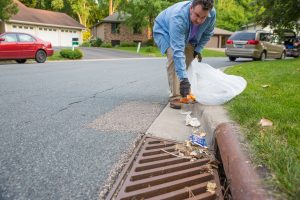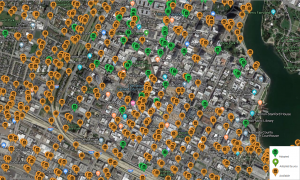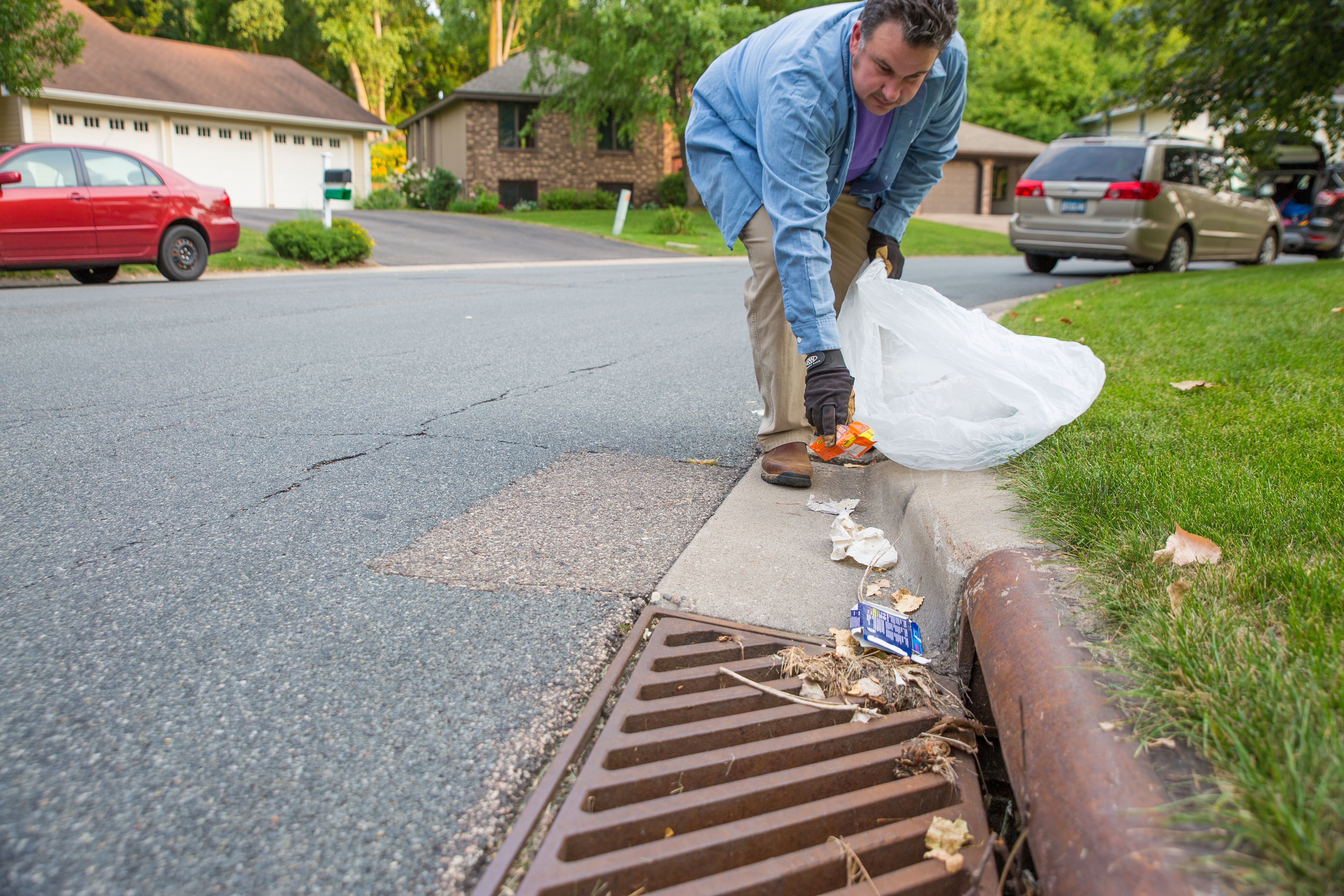According to estimates from the U.S. Bureau of Labor Statistics, about 1 in 4 Americans donate their time each year as volunteers. A growing number of U.S. municipalities are capitalizing on residents’ willingness to pitch in with new volunteer programs that support stormwater management and protect vulnerable waterways.

Hamline University’s (St. Paul, Minn.) Adopt-a-Drain program calls on residents to clear trash, leaves, and debris from neighborhood storm drains at least twice a month. In the 5 years since its launch, the program has attracted more than 4,000 volunteers and prevented more than an estimated 45,000 kg (100,000 lb) of debris from entering vulnerable waterways. Clean Water Minnesota (Minneapolis).
In the Minneapolis–St. Paul (Minn.) metro area, an Adopt-a-Drain program calls on residents to take responsibility for storm drains in their neighborhoods. At least twice each month, drain adopters commit to clearing leaves, trash, and other debris from their drain’s surface. This simple action, which usually calls for about 15 minutes of labor, keeps land-based pollutants out of local waterways and discourages risks of street flooding, said Jana Larson, who manages the program from its headquarters at Hamline University (St. Paul, Minn.).
“Adopting a neighborhood storm drain is an easy way for Minnesotans to improve our local waterways, which are key to quality of life in the Land of 10,000 Lakes,” Larson said.
A model for success
Beginning in 2014 as a pilot project in St. Paul’s Como neighborhood, Larson and Adopt-a-Drain project staff created www.adopt-a-drain.org. The website presents users with simple instructions: create an account; use an interactive map to choose one or more unclaimed storm drains nearby; give the drain a distinctive name; learn best drain-cleaning practices; and get to work.
“Some of the names are pretty cute,” Larson said. “We’ve got a Bubblesworth and a few Stormy McStormdrains.”
The website also asks volunteers to estimate the weight of the debris they collect after each cleaning and record this estimate online. Five years and some 4,000 volunteers since its launch, residents have kept an estiamted more than 45,000 kg (100,000 lb) of debris from entering waterways, according to the website’s latest figures.
In April, Adopt-a-Drain announced plans to expand the program to make approximately 300,000 storm drains adoptable throughout the Minneapolis–St. Paul metropolitan area as well as in the nearby city of Rochester. Nonprofit group Clean Water Minnesota will assist in the expansion, according to a Hamline University press release.
“Five years ago, Adopt-a-Drain was just a brainstorm to promote awareness of the connectivity between what happens on our streets and the health of our rivers and streams,” Larson told Hamline University. “Now it’s a useful online tool that helps communities take action to keep our waterways clean.”
Minneapolis-St. Paul metro area residents can learn more or get involved with Hamline University’s Adopt-a-Drain project at www.adopt-a-drain.org.
Adopt a drain near you
Program staff say expanding the Adopt-a-Drain program will make it the largest program of its kind in the U.S., but it is far from the model’s only successful example. Similar Adopt-a-Drain programs currently function in San Francisco, Seattle, and Oakland, Calif, to name just a few.

Adopt-a-Drain programs exist in many cities. Pictured here, an Adopt-a-Drain map of Oakland, Calif., shows that many storm drains, marked in orange, still need adopters to help prevent street flooding and protect local waterways. City of Oakland, Calif.
The Interstate Commission on the Potomac River Basin (ICPRB; Rockville, Md.) also offers extensive guidance for municipalities, nonprofit groups, and other stakeholders to institute their own Adopt-a-Drain programs. Tips from ICPRB include methods to develop clear program goals and funding sources, ways to calculate how much the program will cost to implement, how to work with volunteers and other organizations to ensure the program is successful, and how to develop effective outreach materials.





